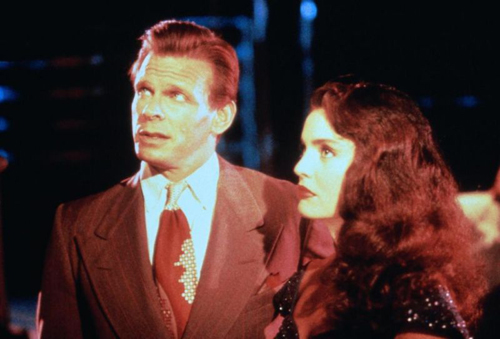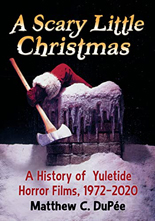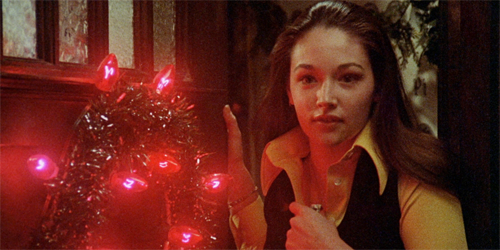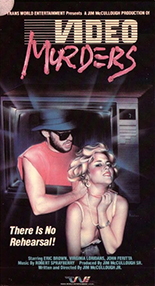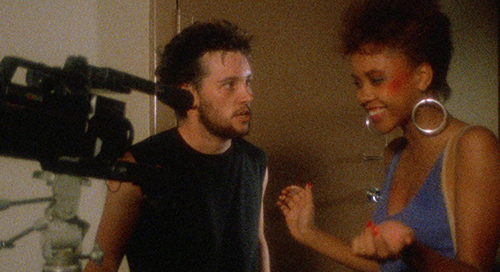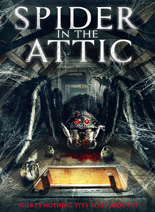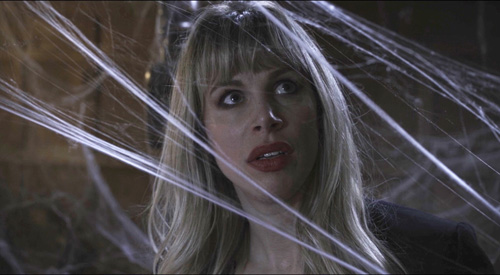
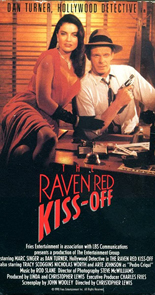 Unlike fellow pulp gumshoes Mike Hammer, Sam Spade and Charlie Chan, Robert Leslie Bellem’s Dan Turner character failed to make much of a splash on the screen. Despite starring in hundreds of short stories, the Hollywood detective has been adapted only twice: by Bellem himself for 1947’s Blackmail, followed more than four decades later by The Raven Red Kiss-Off.
Unlike fellow pulp gumshoes Mike Hammer, Sam Spade and Charlie Chan, Robert Leslie Bellem’s Dan Turner character failed to make much of a splash on the screen. Despite starring in hundreds of short stories, the Hollywood detective has been adapted only twice: by Bellem himself for 1947’s Blackmail, followed more than four decades later by The Raven Red Kiss-Off.
Incidentally taking place in the year of Blackmail’s release, Kiss-Off finds business at rock bottom for Tinseltown private investigator Turner (Marc Singer, The Beastmaster), reduced to locating lost cats. Then studio executive Bernie Ballantyne (Danny Kamin, Young Guns), “the meanest man in Hollywood,” hires Turner to keep tabs on his va-va-voomy mistress, Vala DuValle (Tracy Scoggins, Demonic Toys), while she’s shooting a new picture; in particular, Ballantyne fears his valentine is being blackmailed.
On the shoot, Turner runs into an old flame (Bethany Wright, Simple Men), and they immediately reignite with a heavy make-out sesh … until she’s shot dead by a gun poking through the curtains. Suddenly, Turner has blue balls two mysteries on his hands. Could they be related? Of course!
Alternately known as simply Dan Turner, Hollywood Detective, the flick was intended to kick-start a TV-movie franchise, all to be lensed in Tulsa, Oklahoma, where director Christopher Lewis had mined VHS gold with his shot-on-video terror trilogy of Blood Cult, The Ripper and Revenge. Unfortunately, his 35mm film noir found no favor with audiences still attuned to the neon vibe of Miami Vice, which had just finished its long run.
Stacy Keach’s Mike Hammer series also had gone off-air, so it’s possible by then, America was all fedora’d out of period-piece P.I.s who didn’t also have a soundtrack album by Madonna. As Turner, Singer overcranks the dial of pulp-dick affectations to the point which Lewis should’ve reminded his leading man they were making a pastiche, not a parody. As his co-stars prove, it can be done without overdoing it.
That’s not to say The Raven Red Kiss-Off is no fun. Although clearly hampered by a small budget and Lewis’ limitations, the screenplay by knowledgeable first-timer John Wooley (co-author of several Forgotten Horrors volumes) casts a spirit-appropriate shadow and offers the occasional inspired sequence — chief among them, an inventive chase through an amusement park, with Turner hopping from ride to ride to escape his pursuer.
Showing up for a scene or two apiece are Clu Gulager, Arte Johnson, Paul Bartel and Eddie Deezen. Can you guess which one of the four is completely incapable of toning down his shtick to fit into place? —Rod Lott

